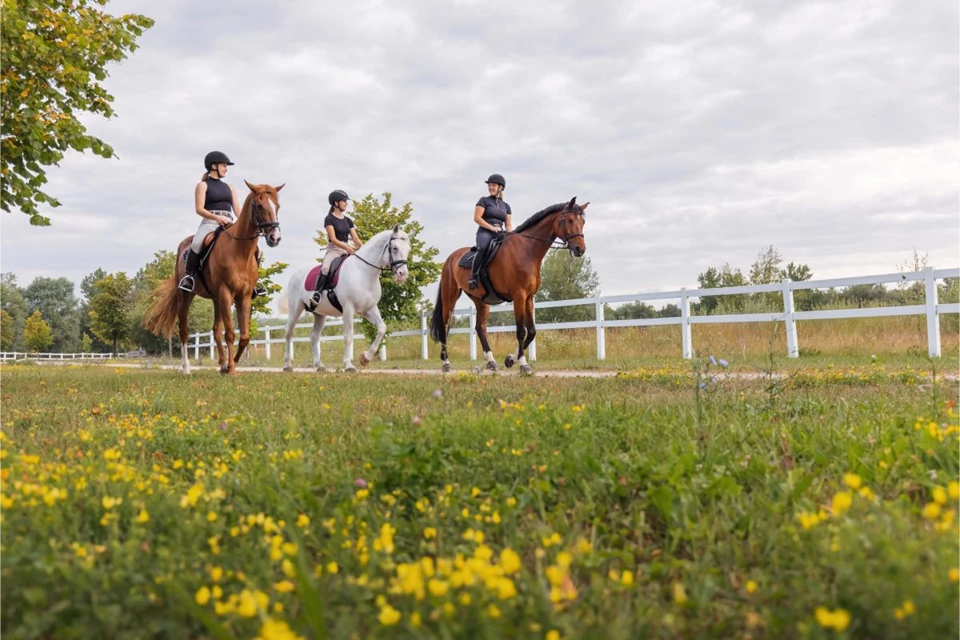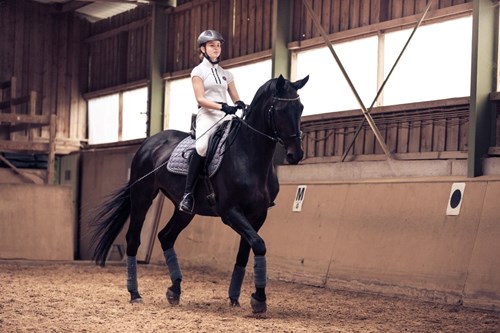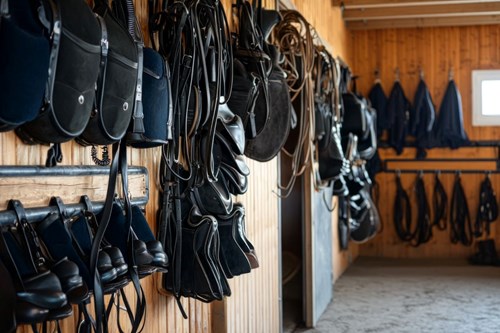Equestrian Rules and Things to Consider

Equestrianism is not just a sport—it’s a relationship of trust, balance, and respect between the rider and the horse. However, in order to progress safely and successfully in this graceful discipline, it’s essential to follow certain basic rules and pay attention to important details. At Cavalier Sanmarco, we’ve gathered the key elements of a safe and enjoyable riding experience for both beginners and experienced riders.
1. Proper Equipment: The Foundation of Safety
One of the fundamental rules of riding is to use the right, high-quality equipment. From the rider’s clothing to the gear used on the horse, every detail is critical for the comfort and safety of both.
- Helmet: Must always be worn and fastened under the chin. Reduces risk of injury.
- Riding pants: Should be made of flexible material that doesn’t restrict knee or hip movement.
- Boots or shoes: Flat, heelless, and ankle-supporting footwear is ideal.
- Gloves: Protect hands while holding the reins.
- Saddle, reins, bridle: Must fit the horse’s anatomy and not cause discomfort.
2. Approach and Mounting Techniques
Horses are highly sensitive to their surroundings. For this reason, sudden movements must be avoided, especially when first approaching the horse.
- Always approach the horse from its left side.
- Avoid sudden noises or harsh touches.
- Gently stroke the horse’s head and speak calmly to build trust.
- Make sure the stirrups are adjusted correctly and your seat is secure before riding.
3. Core Riding Rules
To ensure a safe and correct ride, the following fundamentals should be followed by all riders:
- Head, shoulders, hips, and heels should align vertically.
- Hands should hold the reins gently but firmly.
- Back should be straight, eyes looking ahead.
- Steering the horse involves more than reins—body balance and leg aids are equally important.
- Maintaining posture requires practice and breath control.
4. Respect the Horse’s Temperament
Each horse has a unique character. A rider must observe and understand the horse’s reactions and act accordingly.
- Don’t force or fight with the horse—use a harmonious approach.
- Allow time for the horse to rest and relax when needed.
- Be patient and communicate gently.
5. Professional Guidance Is Essential
Riding is a discipline that demands both technical knowledge and continual learning. Working with a professional trainer ensures faster progress and helps develop correct habits.
- Training under supervision boosts the rider’s confidence.
- Prevents the formation of bad techniques or unsafe routines.
- Builds a solid foundation for those aiming for a career in equestrianism.
Conclusion: A Safe Journey with Respect, Patience, and Discipline
The key to success in riding lies not only in physical technique but in establishing a deep emotional harmony with the horse. The bond with the horse, attention to rules, and the use of proper equipment are indispensable parts of this journey. At Cavalier Sanmarco, we are proud to support riders with the high-quality gear they need to excel in this elegant sport.






